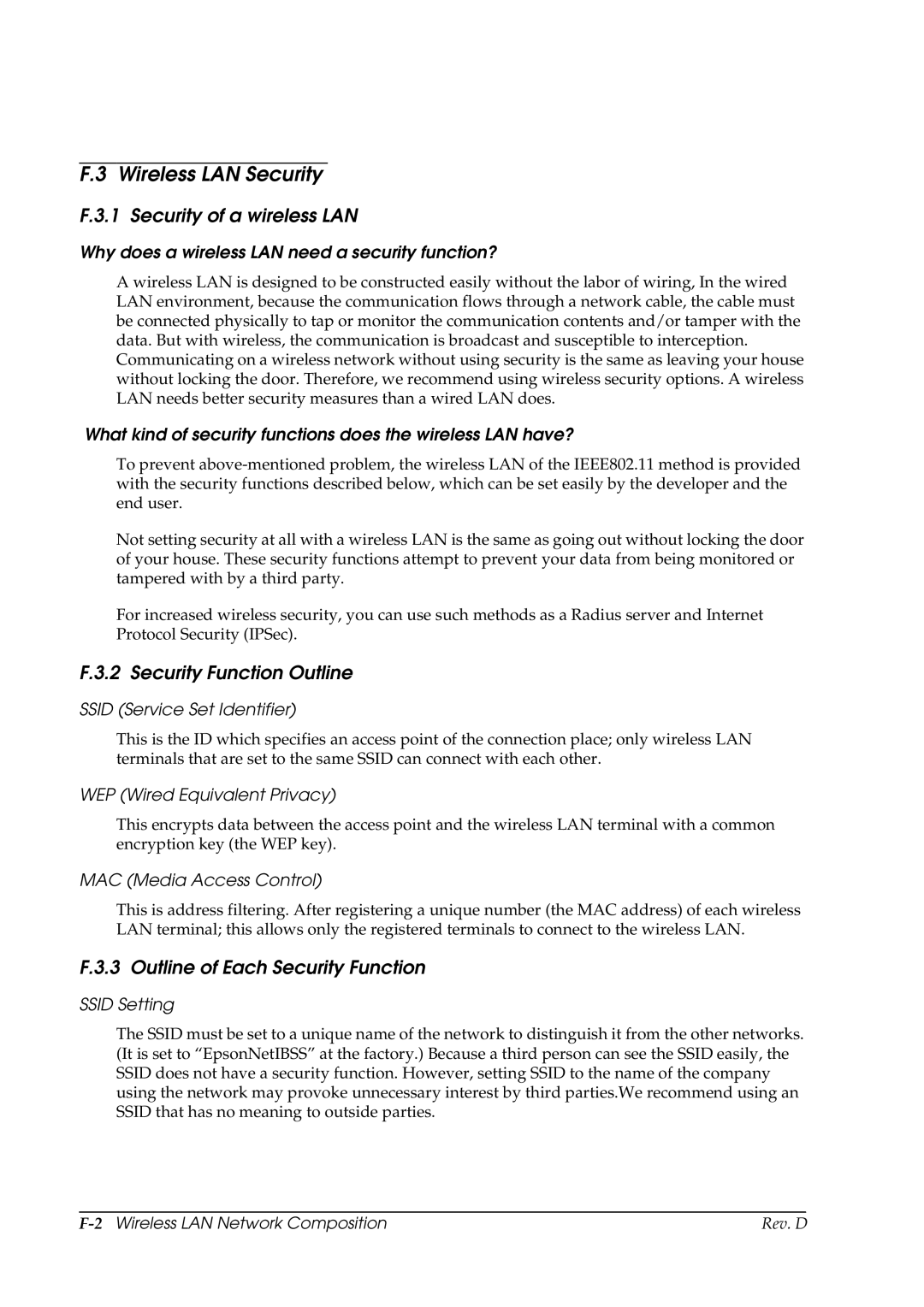
F.3 Wireless LAN Security
F.3.1 Security of a wireless LAN
Why does a wireless LAN need a security function?
A wireless LAN is designed to be constructed easily without the labor of wiring, In the wired LAN environment, because the communication flows through a network cable, the cable must be connected physically to tap or monitor the communication contents and/or tamper with the data. But with wireless, the communication is broadcast and susceptible to interception.
Communicating on a wireless network without using security is the same as leaving your house without locking the door. Therefore, we recommend using wireless security options. A wireless LAN needs better security measures than a wired LAN does.
What kind of security functions does the wireless LAN have?
To prevent
Not setting security at all with a wireless LAN is the same as going out without locking the door of your house. These security functions attempt to prevent your data from being monitored or tampered with by a third party.
For increased wireless security, you can use such methods as a Radius server and Internet Protocol Security (IPSec).
F.3.2 Security Function Outline
SSID (Service Set Identifier)
This is the ID which specifies an access point of the connection place; only wireless LAN terminals that are set to the same SSID can connect with each other.
WEP (Wired Equivalent Privacy)
This encrypts data between the access point and the wireless LAN terminal with a common encryption key (the WEP key).
MAC (Media Access Control)
This is address filtering. After registering a unique number (the MAC address) of each wireless LAN terminal; this allows only the registered terminals to connect to the wireless LAN.
F.3.3 Outline of Each Security Function
SSID Setting
The SSID must be set to a unique name of the network to distinguish it from the other networks. (It is set to “EpsonNetIBSS” at the factory.) Because a third person can see the SSID easily, the SSID does not have a security function. However, setting SSID to the name of the company using the network may provoke unnecessary interest by third parties.We recommend using an SSID that has no meaning to outside parties.
Rev. D |
